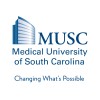
Safety and Preliminary Efficacy of Allogeneic Endothelial Progenitor Cells (EPCs) in Patients With...
Acute Ischemic StrokeThis is a single center, randomized, double-blind, placebo-controlled, dose-Escalation clinical study to investigate the safety and efficacy of EPCs transplantation in Acute ischemic stroke.

Results of the Use of Two Stentrievers Simultaneosly Compared With One as a Primary Treatment in...
StrokeThrombectomy1 moreSeveral studies have demonstrated that simultaneous treatment with two stentrievers (STs) as rescue treatment is very effective, with high recanalization rates even in this group of patients where other revascularization techniques have failed. There has been no observed increase in hemorrhagic complications. Recently, a prospective study has been published where treatment with two ST has been shown to be effective and safe if used as a first-choice treatment (not as rescue) with a successful recanalization rate (eTICI 2c/3) after the first pass of 69%. These results have been reinforced after the publication of a randomized study that confirms, in vitro, the superiority of using two ST over one.

Impact of a Standardized Alarming System on Treatment Times and Workflow in Stroke Patients With...
Acute Ischemic StrokeThe aim of this study is to evaluate the impact of a standardized alarming system on treatment times and workflow in stroke patients with interhospital transfer for mechanical thrombectomy (MT). The main questions it aims to answer are: Is the implementation of a standardized alarming system associated with shorter transfer and treatment times? Is the implementation of a standardized alarming system associated with a better adherence on existing standard operating procedures for interhospital transfer? We will analyze data from our existing thrombectomy registry comparing time periods before and after introduction of the MT alarming system.

Testing of a System for Remote Ischemic Conditioning in Cerebral Small Vessel Disease and Pre-hospital...
Cerebral Small Vessel DiseasesCerebral Small Vessel Ischemic Disease4 moreThis early phase trial will address the following key objectives: Completion of initial safety and tolerability testing of our viable prototype for remote ischemic conditioning (RIC) with patients with (a) CSVD and (b) acute ischemic stroke. Usability testing of the prototype with patients and healthcare professionals, with further optimization. Approximately 24 patients with CSVD will be recruited to use the RIC device daily for 60 days and provide feedback. They will be randomized in a 1:1 ratio to either true RIC therapy or sham control for the first 30 days, after which the sham group will cross over to receive true RIC for the remaining 30 days. Feasibility testing will be done in the mobile stroke unit on up to 10 patients with acute ischemic stroke. An additional 10 stroke physicians and paramedics will conduct device usability testing and provide feedback.

Strategy for Improving Stroke Treatment Response
Ischemic StrokeSISTER is a Phase-2, prospective, randomized, placebo-controlled, blinded, dose finding trial that aims to determine the safety and preliminary efficacy of TS23, a monoclonal antibody against the alpha-2 antiplasmin (a2-AP), in acute ischemic stroke.

Post-stroke Psychosocial Recovery
StrokeStroke is a neurological injury that adversely impacts psychosocial functioning and quality of life. This may occur due to direct insult to the brain circuits integral to adaptive psychosocial functioning, and/or indirectly via significant disruption to routine motor, sensory and cognitive performance. Yet, few evidence-based interventions exist for addressing the broad disruption to emotional and interpersonal functioning specific to stroke, highlighting a clear unmet need. The investigators propose that 1) identifying the most significant disruptions and 2) developing a cognitive-behavioral intervention to promote psychosocial functioning post-stroke is particularly important for overall quality of life, but additionally for adherence to physical rehabilitation and related interventions intended to promote holistic recovery.

Electrophysiological and Clinical Effects of Walking Downhill in Stroke Patients
Strokeinvestigation of the effects of walking for 20 minutes on the acute H/M ratio on flat ground, downhill slopes at -7.5 degrees and -15 degrees in patients who have had a stroke, have spasticity and are ambulatory. At the same time, the aim of the study is to obtain the clinical effectiveness of this walking pattern and control of the H/M ratio by checking the H/M ratio again after 5 sessions and 20 minutes of walking for the patients participating in the study.

Retaining Short-term Training Effects on Gait Adaptability in People With Stroke
StrokeBackground: The majority of stroke survivors regain walking ability. However, the ability to adapt gait patterns to meet environmental demands remains impaired in a majority of people in the chronic phase after stroke. This impaired gait adaptability has a profound impact on activities of daily living and quality of life. Treatment targeting gait adaptability is therefore critical for safe and independent community ambulation in people with stroke. Augmented or virtual reality in rehabilitation programs can be used to train gait adaptability in a controlled situation. A few studies have evaluated gait adaptability training in people with stroke. Although results were promising, these studies did not include an adaptability-related outcome measure, or were limited to uncontrolled or small-scaled pilot studies. Moreover, it is unknown if beneficial training effects can be fostered for 1 year after completion of a training program. We evaluate the short-term effects of a 5-week gait adaptability training in an adequately powered, waiting-list controlled clinical trial [ref naar clin trial nummer]. In the current study, we focus on the retention of potentially beneficial effects of this 5 week gait adaptability training program. We will evaluate if short-term effects of gait adaptability training can be retained through single training sessions to boost performance, or by an home exercise program. We hypothesize that booster sessions and home-based exercise will both yield better retention of training effects at 1 year follow-up as compared to the control arm without an experimental intervention. Objective: The primary objective of this study is to test the hypothesis that retention of training-induced gains in gait adaptability can be fostered by providing booster sessions or by prescribing home-based training. Study design: Explorative randomized study, comparing the effect of 3 1-hr booster training sessions against home-based exercise against no intervention on gait adaptability performance 1 year after completion of a 5-week gait adaptability training program. Study population: Stroke patients in the chronic phase after stroke, who completed the 5-week gait adaptability training using the C-Mill and agreed to continue in this follow-up study. We expect this to be 50-75 participants.

The South London Stroke Register: Improving the Lives of Stroke Survivors With Data
StrokeSubarachnoid Hemorrhage1 moreThe South London Stroke Register (SLSR) is an observational population based registry, combining a population incidence study of stroke events in a geographically defined area of South London and a cohort study of these patients followed up over time. The SLSR has been continually ongoing since January 1995 using the WHO ICD-10 definition of stroke. From April 2022, SLSR will use the new ICD-11 definition for case identification to establish a new prospective cohort of patients identified according to the new definition. Follow up of the existing retrospective cohort of current patients will continue, providing data on long term outcomes of stroke through a program of regular patient interviews up to 15 years after stroke. Outcome measures include health outcomes, such as stroke mortality and recurrence, and measures of activities of daily living, quality of life and mental health (cognition, anxiety, depression). The new data collection will include newly selected scales to best capture variation in key health domains and long term outcomes. The change to ICD-11 is expected to lead to an increase in the incidence of stroke and a reduction in the average severity, but the effects of this change have not yet been measured in any population internationally. There is a need for a high quality population-based stroke incidence study to address this gap. Similarly, the factors determining the health of long-term stroke survivors can only be understood using a long running observational cohort study. The overall purpose of this research is to continue and develop the SLSR data collection and analysis to address the needs of stroke patients in the 2020s. The current programme was funded to address the following objectives as part of a broader NIHR programme grant on using data to improve the lives of stroke survivors: Understand the impact of the ICD-11 new definition of stroke Define the outcomes and needs of long-term stroke survivors Support stroke survivors and stakeholders with these detailed data and analyses Describe the use of formal, informal, and social care services up to 15 years after stroke Asses the influence of formal, informal, and social care use on stroke recovery and generate patient-level total costs up to 15 years after stroke

Learning in Stroke
StrokeSensorimotor ImpairmentAfter a stroke, plasticity occurs in the brain from microscopic to network level with positive but also negative consequences for functional recovery. Why post-stroke plasticity takes a beneficial or a maladaptive direction is still incompletely understood. Because the biological mechanisms underlying sensorimotor learning parallel those observed during recovery, learning mechanisms could be potential modifiers of post-stroke neuroplasticity and have a discrete mal-/adaptive impact on the recovery of sensorimotor function. This project seeks to further the understanding of the link between brain circuits that control the integration of new information during procedural learning in the injured brain and those circuits that are involved in adaptive plastic changes during recovery of sensorimotor function post-stroke. The project's methodological approach will allow the characterization of procedural learning-related neural network dynamics based on functional magnetic resonance imaging (MRI) in human volunteers with and without neurologically impairment post-stroke. Through multivariate integration of behavioral and biological descriptors of sensorimotor recovery, the project will investigate the association between motor learning-related network dynamics and descriptors of recovery.
